Motorola Edge 50 Ultra review

Promising triple camera hardware
The Edge 50 Pro didn't look like the most logical follow-up to last year's model in the camera department, and that's because this time there's an Ultra. The Edge 50 Ultra comes with a more tricked out setup, including a high-res imager for its telephoto, a large-sensor main camera, the 40 Pro's ultrawide. Meanwhile on the front, the Edge 50 Ultra shares the 50 Pro's excellent 50MP unit.

For the main camera, the Edge 50 Ultra uses the 1/1.3" OmniVision OV50H sensor that we've seen on a few occasions (the iQOO 12 and the Honor Magic6 PRo come to mind), and it's looking like a worthy upgrade to the 1/1.55" modules on the 40 Pro and 50 Pro.
The telephoto camera gets a 64MP 1/2.0" sensor and a 3x zoom lens, and we'll have a quick look at how it can handle the 6x zoom level that the viewfinder readily advertises.
The proven Samsung JN1 is on the ultrawide camera, and what we believe to be a differently packaged version of it, reported as JNS, is used for selfies.

As we already saw on the 50 Pro, the 50 Ultra has a setting in the viewfinder that lets you capture shots and directly apply the Google Photos 'Enhance' processing. We had our doubts if that was the best way to go about your picturetaking, since there's no apparent way to get the pre-enhanced photo once you've saved the auto enhanced version. Then again, if you prefer that look, by all means go for it - we'll do a quick comparison.
- Wide (main):50MP OmniVision OV50H (1/1.3", 1.2µm - 2.4µm), f/1.6, 23mm, multi-directional PDAF, Laser AF, OIS; 4K@60fps
- Ultrawide: 50MP Samsung JN1 (1/2.76", 0.64µm-1.28µm), f/2.0, 12mm, PDAF; 4K@60fps
- Telephoto: 64MP OmniVision OV64B (1/2.0", 0.7µm), f/2.4, 71mm, multi-directional PDAF, OIS; 4K@60fps
- Front camera: 50MP Samsung JNS (likely a variation of JN1, 1/2.76", 0.64µm-1.28µm), f/1.9, 21mm, PDAF; 4K@60fps
Daylight photo quality
Main camera
The Edge 50 Ultra's main camera captures great-looking daylight photos. They have a lot of pop in part thanks to the relatively high contrast (a bit too much, maybe), and in part because of the lively colors (which we'd say Motorola has dialed in nicely in the Natural mode).
Detail is very good and we'd say that the Ultra is drawing random textures that one extra bit more naturally than what we saw on the Pro (itself not too bad to begin with). Noise is essentially non-existent in outdoor shots though some grain can creep into the shadows in dimmer indoor settings.






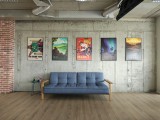


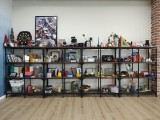

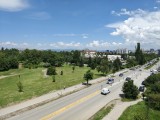
Daylight samples, main camera (1x)
The Auto Enhance style does liven things up further and will give you lusher greens and a boost in the reds - well, let's call it a notch up in saturation overall.






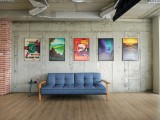

Daylight samples, main camera (1x), Auto Enhance
Here's a handful of people shots to show you how the phone deals with skin tones. As was the case on the Edge 50 Pro, the 50 Ultra's skin tone reproduction has been okayed by the color specialists at Pantone, for what that's worth.




Daylight samples, main camera (1x), Photo mode




Daylight samples, main camera (24mm), Portrait mode
There's no 2x button in the viewfinder of the Edge 50 Ultra, but in Portrait mode you do get a couple of more zoom levels before you get to the 3x/85mm setting. The 35mm preset delivers solid images, but the 50mm shots are less exciting and can serve as a clue as to why there isn't a 2x shortcut in Photo mode.




Daylight samples, main camera (35mm), Portrait mode




Daylight samples, main camera (50mm), Portrait mode
The full-res mode on the main camera doesn't really capture meaningfully better detail - it's just the same things only larger and at 3x the file size.






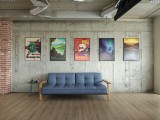

Daylight samples, main camera (1x), 50MP
Telephoto camera
The telephoto camera's results are also respectable, if not quite spectacular. The 16MP resolution ensures plenty of fine detail, while the general fine graininess is there when you look for it, but not in your face.





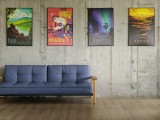
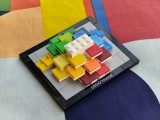
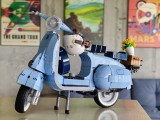
Daylight samples, telephoto camera (3x)
Photo mode shots at 3x as well as Portrait mode images at the 85mm setting look great in abundant outdoor light, though quality does drop when shooting in dimmer conditions, more noticeably in Portrait mode.




Daylight samples, telephoto camera (3x), Photo mode




Daylight samples, telephoto camera (85mm), Portrait mode
The full-res 64MP mode on the telephoto camera just might be able to give you some extra definition in certain conditions - check out the clock in the castle sample, for instance. It's not a universally observable improvement though.




Daylight samples, telephoto camera (3x), 64MP
The 6x zoom level results aren't exactly tack-sharp, but they're decently detailed. Add to that the convenience of having a direct shortcut and the tailored metering and exposure for the cropped coverage and we could call it a useful mode. It's not a magical 'lossless', 'optical-grade' or whatnot quality though.




Daylight samples, telephoto camera (6x)
Ultrawide camera
From a 140-ish mm equivalent to 12mm (if the EXIF data is to be believed) - let's have a look at the ultrawide camera's photos. These are quite good too, with excellent global qualities in terms of color and dynamic range. Detail has a bit more of an artificial rendition than the other two cameras, but it's not excessive in the context of ultrawides. The rather extreme field of view is most welcome as it lets you play around with exaggerated perspectives - the AF is happy to cooperate with some very short minimum distances.
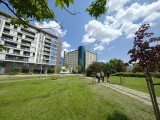
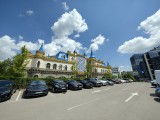

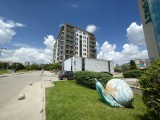
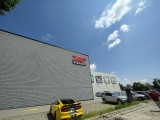
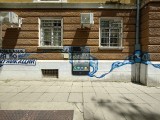
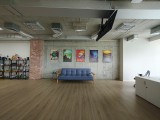
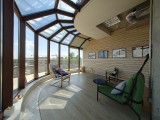
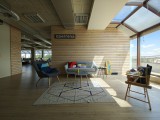
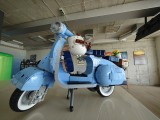
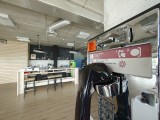

Daylight samples, ultrawide camera
Macro mode, closeups
The Edge 50 Ultra's macro mode leverages the ultrawide camera, but applies a digital zoom to match the main camera's field of view. It's an amusing combination of extremely short focus distance, distortion and detail that ultimately does produce striking shots - not the sharpest, but not half bad.


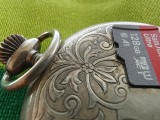
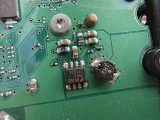
Close-up samples, ultrawide camera, macro mode
Alternatively, you can try and get the telephoto to play along and capture some shots at its own minimum focusing distance. When you're in Photo mode, the phone will switch from the telephoto to the main camera when you get too close to a subject, though the distance where that switching occurs isn't the actual minimum focusing distance - it switches from further away, robbing you of some magnification.
You can resort to Pro mode to alleviate that, but the Pro mode shots apparently don't benefit from all the processing magic that happens in Photo mode and image quality isn't quite as good - things are looking quite grainy here.


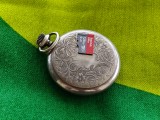
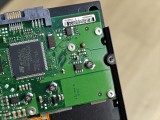
Close-up samples, telephoto camera, Pro mode
Here's a couple of comparisons of photos captured on the telephoto camera in Pro mode versus Photo mode, at the respective 'minimum' focusing distances.

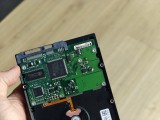


Close-up samples, telephoto camera: Pro mode • Photo mode
Selfies
As we expected having seen the Edge 50 Pro's selfies, the ones from the 50 Ultra are superb. The phone captures excellent detail and the AF capability allows for some... creative framing while keeping your mug sharp. Skin tones are likeable and colors are very nice overall - we'd say a little better than what we got out of the Pro. Dynamic range is excellent too.
Low-light photo quality
Main camera
Low-light photos from the Edge 50 Ultra's main camera are very good as well. The one thing that we'd mention as sort of a negative is the relatively unenthusiastic color rendition - we wouldn't necessarily label it as desaturation, it's just Motorola's default color look at night isn't what we'd call our favorite.
Other than that half of a complaint, there's little to dislike about these. Dynamic range is very good, detail is excellent and noise is well controlled.

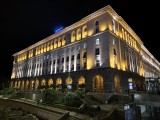

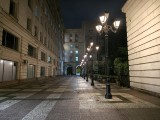


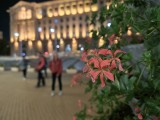

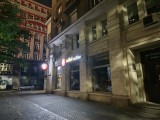

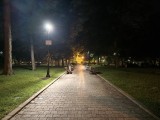
Low-light samples, main camera (1x)
You stand to gain marginally better highlight preservation if you opt for the dedicated Night mode. You can play around and find your balance and switch modes for specific scenes, but we consider the full-auto results easily good enough.

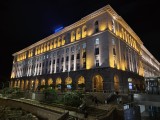


Low-light samples, main camera (1x), Night mode
Telephoto camera
The phone's telephoto camera is more liberal with the saturation, plus it can err on the warm-ish side with its white balance, though it's not an offensive look. Dynamic range is once again great, while detail is somewhere in the good to very good range.






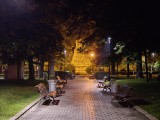
Low-light samples, telephoto camera (3x)
The 6x zoom level makes for more of a watercolory look to detail, and we wouldn't stare too closely at these photos, though they are usable for less critical applications.
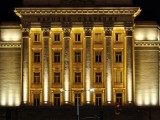





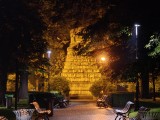
Low-light samples, telephoto camera (6x)
Ultrawide camera
The ultrawide camera is also keen on making the streets look warmer than they are, but it too isn't the worst offender we've seen. It likes to expose brightly, which we don't mind, and it does manage to capture quite wide dynamic range - that cafe sign in the 7th photo is nearly impossible to restore anyway. Detail is on the soft side, so maybe stick to fit-to-screen magnifications.





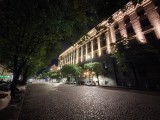
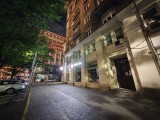
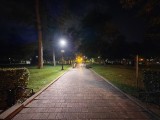
Low-light samples, ultrawide camera
Video recording
The Edge 50 Ultra can record video up to 4K60 on all of its cameras - the three rear ones and the selfie one too. The default codec is h.264, but you can opt for h.265 by flipping a toggle in settings.
Stabilization is available in all modes, and can't really be switched off - the button in the viewfinder only toggles between the regular mode and the Horizon lock, but doesn't really have an off position.
Video quality on the Edge 50 Ultra isn't sending us raving. The main camera's 4K30 footage 40-59Mbps bit rate) is so heavily sharpened that it's almost grotesque. The 4K60 clips (50-63Mbps) are a tiny bit less so, but still look excessively processed. We do like the color rendition and the wide dynamic range, so it's not all bad.
The ultrawide camera is also in a similar boat with its performance, though as ultrawides go, it's actually capturing better than average quality footage. It's not a great look that the colors aren't matched between the ultrawide and the main camera (skies are most evident), but let's say you won't be shooting movies on the 50 Ultra for that to be of utmost importance.
The telephoto's 4K clips have a bit of a softness to them, but do maintain good global properties.
We had mixed experience with stabilization on the Edge 50 Ultra. The ultrawide camera did very well with walking shake, panning, or just staying pointed in one direction. The telephoto also panned smoothly and while it didn't quite look tripod-like, it managed to maintain relative stability when you'd just hold the phone in one place. The main camera was good in its stabilization efforts, but was struggling with recording fine detail when moving - a rather unusual behavior you can observe in the grass that's captured in blurry patches.
In low light, the main camera does decently. Detail is alright, dynamic range is more like very good, and the colors maintain an adequate level of saturation. The Night vision mode (main camera only) does well to brighten up the shadows without notable sacrifices, so you can switch to that in dimmer situations. The ultrawide is also dealing quite well with darkness compared to others of its kind, and exposes well, with good dynamic range, and decent detail overall. The telephoto is largely unremarkable.
Video sample playlist
You can check out the playlist below, which includes multiple video samples.
Reader comments
- Jamesthe1st
- 13 Feb 2025
- yMm
haha alright, so I have already turned off image enhancement using natural one. issue I had was at nighttime if there is sudden flash of light coming on the scene the camera will turn off night mode, exposure settings or something and pics would be e...
- Pacifist
- 13 Feb 2025
- 7%%
i was the one writing anonymously about my experience with the phone, i found that i have a login for this site😹 well i was determined to fix the camera issue, and i think i fixed mine. setting the picture mode (tapping the three intersecting ci...
- Jamesthe1st
- 12 Feb 2025
- yMm
Thank you, I'm loving the new moto. UI is smooth, bloat can be uninstalled, camera is fine sometimes it misses to detect lighting conditions so exposure is off, otherwise all is good, nighttime and stability is good, loving telephoto module. My ...






